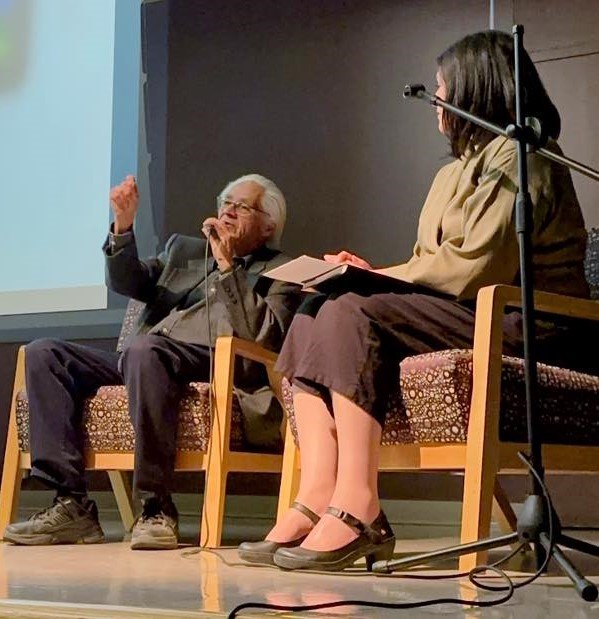MOOSE JAW — Artist Dave Pelletier’s latest paintings were created within a Woodland School style that present his own imagined “legendary” stories through graphic and colourful stylized compositions of animals and figures of Turtle Island.
“Wóknaga: He Tells His Own Story” is the newest exhibition at the Moose Jaw Museum and Art Gallery (MJMAG) and runs from May 31 to Sept. 1.
Pelletier is a Metis/Nehiyawak/Nakoda/Scottish artist who honours First Nation intergenerational transfer of knowledge through storytelling within his canvases. He offers his imagined narratives through the graphic and colourful compositions of animals and figures from this land.
Inspired by Norval Morriseau, Pelletier’s compositions of stylized, abstracted forms, bold colours and crisp, black outlines and energy lines offer narratives that speak to the artist’s search for traditional knowledge and his journey to place himself and connect with his indigenous cultures.
Turtle Island is a recurring subject in Pelletier’s works, a reference to various Aboriginal origin or creation stories where the turtle carries North America or the world on its back, becoming a symbol of life and a “marker of identity, culture and a deeply held respect for the environment.”
Pelletier offers his interpretations of these origin stories, creating narratives that speak to the interconnectedness of all СŔ¶ĘÓƵs and honour the land as a living entity and source of knowledge. This is displayed in the work “Turtle Islands,” where he acknowledges the multiple origins of the diverse nations on Earth.
References to knowledge, learning and discovery also appear throughout this collection, which spans the artist’s 20-year career. Meanwhile, the work “New World” includes symbols embedded within its complex, colourful patterns of a sweat lodge and pictographic images of a hunt, suggesting that learning and the transfer of knowledge come in various forms and sources.
While these visual narratives in Wóknaga present Pelletier’s imagined storylines, as in “Warm Breezes,” which offers his playful concept of how Moose Jaw received its name, the narratives also present his responses to current issues and topics.
For example, “Turtle Island Day” speaks to humanity’s effects on and imbalance with the natural world in its acknowledgement of Earth Day, while “Forked Tongue” and “Pebbles” address truth and reconciliation and the ongoing “colonial impacts” on indigenous people and communities.
“Pebbles” acknowledges the spirit energy of rocks or stones and is a direct response to the discovery of possible unmarked graves in British Columbia and Saskatchewan.
Pelletier’s works also reflect on the power of storytelling in the transfer of traditional knowledge, the sharing of embodied experience and cultural memory, and how, in this transfer, stories contribute to identity and navigating or situating oneself within one’s culture.
Pelletier was born in Balcarres, raised in Lebret and has lived in Moose Jaw since 1968. He joined the military after high school and returned to Moose Jaw in 1977. A year later, he trained at the Saskatchewan Technical Institute in radio/TV electronic servicing and worked in that field for several years.
He later joined Friendship Centres and became executive director of the centre in Moose Jaw. It was this connection that inspired his interest in his First Nation background and led him to seek out the legends and stories of his culture.
After completing a diploma in business at SIAST, he started Moosgaw Arts and Gifts in Moose Jaw in 2003 and began pursuing his ideas and interpretations of the indigenous world in his paintings.
In 2023, he retired from working as a federal government employee at 15 Wing Airbase.
His work has been exhibited in Saskatchewan and is in many private collections throughout Canada.
An opening reception and artist talk to celebrate the launch of Wóknaga occurred on May 31.




